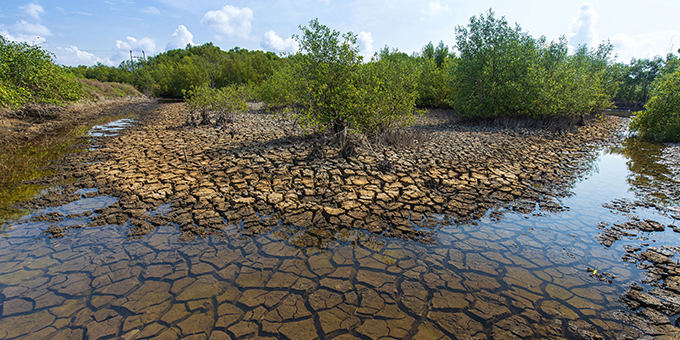You are here
Science Resources

Water and the Law: Drought and Water Scarcity – Too Little Water
Summary of Key Points
- Private water use rights are governed at the state level, but federal intervention may take place due to trust obligations to tribal nations, interstate water conflicts, or violation of federal environmental statutes such as the Endangered Species Act or the Clean Water Act.
- Drought is challenging to define because it is a relative concept determined against a baseline for a given region. Droughts are generally considered to be a departure from “normal” precipitation over some discrete period of time.
- Droughts can be generally categorized into supply-side droughts (e.g., meteorological droughts) or demand-side droughts (e.g., hydrologic and agricultural droughts). Demand-side droughts can result from a change in the type or timing of precipitation.
- Droughts can be caused by natural phenomena such as oscillations in ocean currents and accentuated by land-atmosphere feedback loops. Long-term trends in human water consumption, agricultural practices, and climate change can all also impact drought.
- Water consumption and water withdrawal are two distinct forms of water use, and both need to be carefully monitored and managed to ensure long-term resource sustainability. The amount of available surface water is a probability-based (stochastic) parameter, typically evaluated using long-term historic trends. However, estimates based on these historic data may incorrectly assume time-series stationarity.
- Water resource managers use a suite of tools to ensure long-term water resource sustainability, including demand management, capture and reuse, aquifer replenishment and recharge, and desalination.
